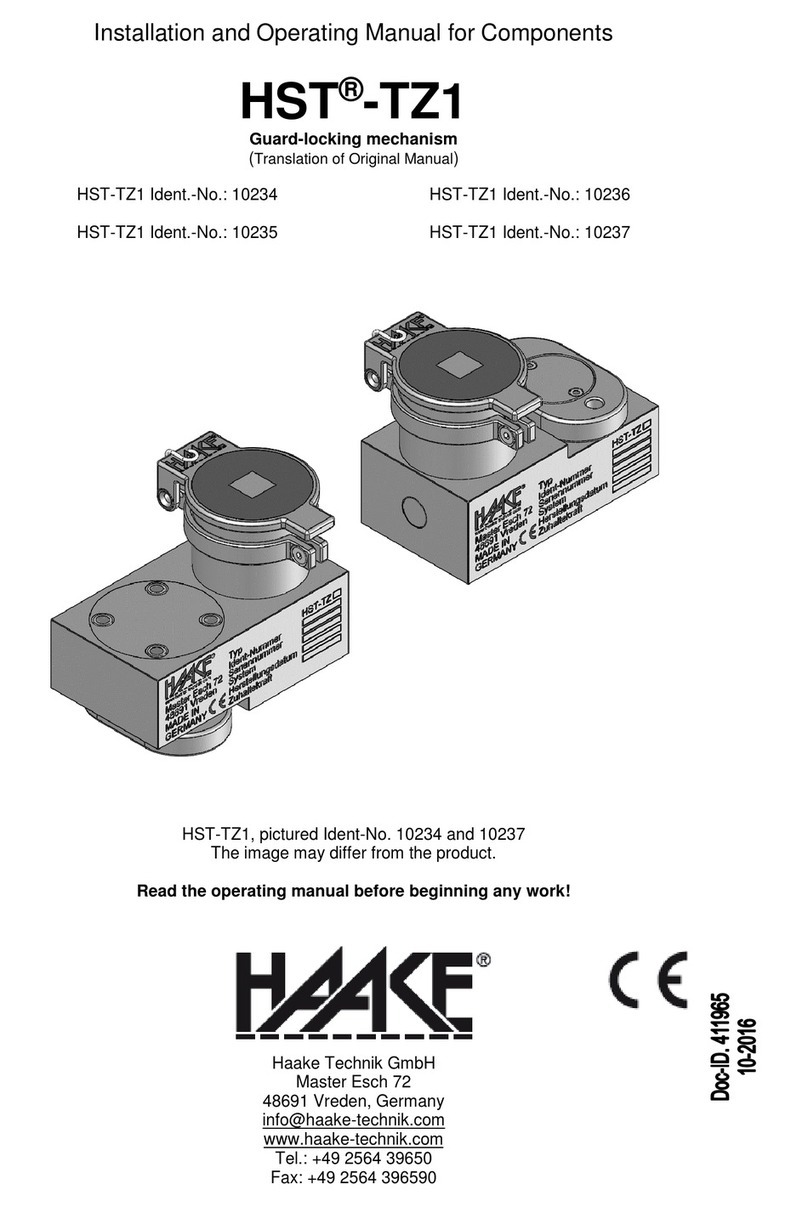
2
This installation and operating manual contains proprietary information, which is subject to copyright.
No parts of this documentation may be reproduced or transferred in any manner or by any means, be
it electronic or mechanical, for any purpose without obtaining prior written consent.
Haake Technik GmbH assumes no liability for damage or subsequent damage, arising from the use of
components or replacement parts, which are not original parts.
Haake and HST are registered trademarks of Haake Technik GmbH. All other brand and product
names not mentioned here are or may be registered trademarks and are to be treated accordingly.
© Haake Technik GmbH, Master Esch 72, 48691 Vreden, Germany
All rights reserved.
Contents
1Scope............................................................................................................................................... 3
2Intended use.................................................................................................................................... 3
3Symbol Explanation......................................................................................................................... 3
4Disposal........................................................................................................................................... 3
5Foreseeable misuse ........................................................................................................................ 4
6Identification..................................................................................................................................... 4
7Safety-related functioning................................................................................................................ 4
8Defects which cannot occur............................................................................................................. 5
9Scope of delivery............................................................................................................................. 6
10 Structure and function ..................................................................................................................... 7
10.1 Description............................................................................................................................... 7
10.2 Example................................................................................................................................... 7
11 Safety measures.............................................................................................................................. 8
11.1 Organisational measures......................................................................................................... 8
11.2 Safety of persons..................................................................................................................... 8
11.3 Operating conditions and limitations of use............................................................................. 8
11.4 Assembly................................................................................................................................. 8
11.5 Repairs / Alterations ................................................................................................................ 8
12 Installation........................................................................................................................................ 9
12.1 Preparation.............................................................................................................................. 9
12.2 General approach.................................................................................................................... 9
12.3 Installation instructions ............................................................................................................ 9
13 Performance check........................................................................................................................ 10
14 Operation....................................................................................................................................... 10
14.1 Opening the separating safeguard........................................................................................ 10
14.2 Interlocking the separating safeguard ................................................................................... 10
15 Maintenance.................................................................................................................................. 11
16 Cleaning......................................................................................................................................... 11
17 De-installation................................................................................................................................ 11
18 Troubleshooting............................................................................................................................. 12
19 Technical data ............................................................................................................................... 12
20 Dimensions.................................................................................................................................... 13
21 EC Declaration of Conformity........................................................................................................ 15




























